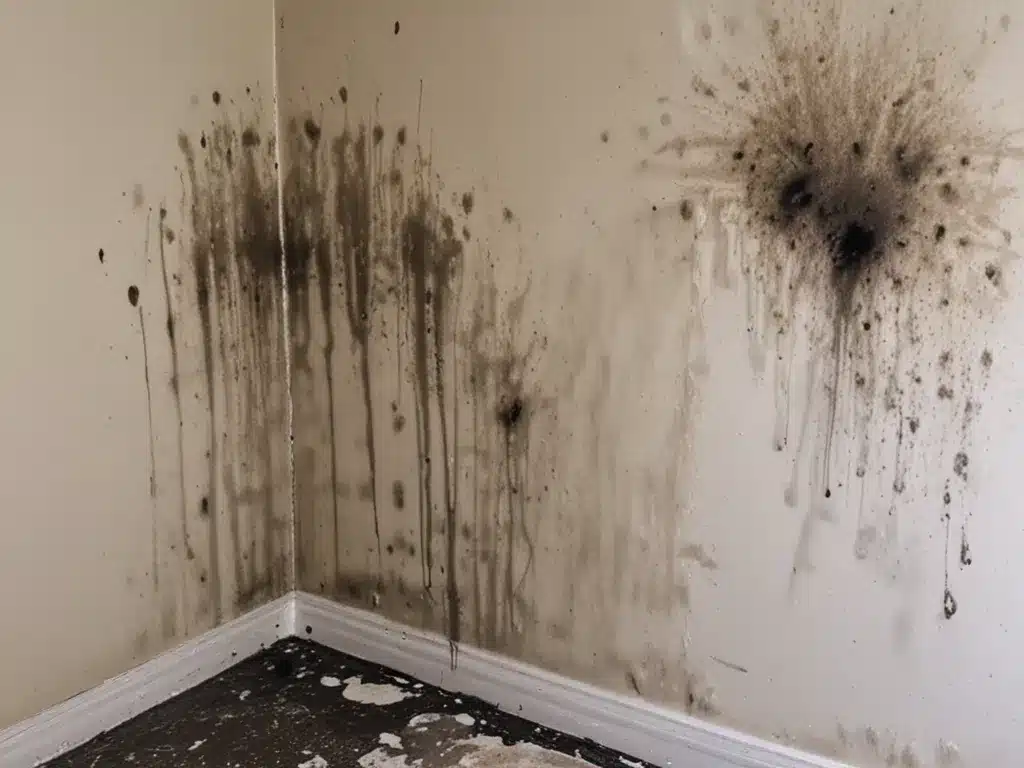Toxic black mold, also known as Stachybotrys chartarum or Stachybotrys atra, is a dangerous mold that can grow in your home. As a homeowner, it is critical that you learn how to identify, test for, and safely remove toxic black mold. In this comprehensive guide, I will cover everything you need to know about toxic black mold removal.
Identifying Toxic Black Mold
The first step is learning how to identify toxic black mold. Here are some key characteristics to look for:
-
Color – Toxic black mold is dark green or black in color. It has a slimy, wet appearance.
-
Musty odor – Toxic black mold gives off a musty, earthy smell. If you detect this odor, it could indicate mold growth.
-
Water damage – Toxic black mold grows in damp areas with water damage. Check areas like basements, bathrooms, attics, and around pipes, windows or HVAC units.
-
Health issues – Headaches, breathing problems, rashes, sinus congestion and other health issues may indicate toxic black mold exposure. Pay attention if symptoms worsen in certain rooms.
If you suspect toxic black mold, the next step is testing to confirm.
Testing for Toxic Black Mold
To verify toxic black mold growth, professional mold testing is recommended. Here are some testing options:
-
Mold inspection – A professional mold inspector can visually check for toxic black mold and take samples for lab analysis. This provides definitive proof of toxic black mold.
-
DIY mold tests – Home mold test kits check the air or surfaces for mold spores. While convenient, they are not as reliable as professional lab tests.
-
Lab analysis – Advanced mold testing labs can identify specific species of mold from air or surface samples. This confirms whether toxic black mold species like Stachybotrys are present.
Professional mold testing provides the most accurate results. Be sure to test any suspect areas to confirm toxic black mold growth before attempting removal.
Dangers of Toxic Black Mold Exposure
It is critical to remove toxic black mold because exposure can lead to serious health issues, including:
-
Respiratory problems – Toxic black mold can cause wheezing, breathing difficulties, sinus infections, coughing and pulmonary hemorrhage.
-
Immune suppression – Toxin exposure can weaken the immune system and make you more prone to illness.
-
Neurological issues – Headaches, memory loss, mood swings and tremors are associated with toxic black mold.
-
Cancer risk – Some studies link mycotoxins from toxic black mold to certain cancers.
-
Death – In severe cases, toxic black mold exposure can even be fatal. Infants, children, the elderly and those with compromised immune systems are most at risk.
Do not take toxic black mold lightly. Consulting a doctor after exposure is recommended. The health risks make proper removal vital.
Professional Toxic Black Mold Removal
Safely removing toxic black mold requires professional expertise. Here is what professional toxic black mold remediation involves:
-
Containment – The affected area is isolated with containment barriers and negative air pressure. This prevents spores from spreading during the removal process.
-
Removal – Mold damaged materials are discarded. Contaminated surfaces are cleaned and disinfected. Advanced antimicrobial products are used to kill mold.
-
Drying – All moisture sources are addressed. Equipment like dehumidifiers and air movers dry all materials to prevent mold regrowth.
-
Cleaning – A HEPA vacuum removes mold particles. Air scrubbers filter spores during remediation. All work areas are thoroughly sanitized.
-
Verification – Post-remediation testing confirms the space is free of toxic black mold and safe for re-occupancy.
Professional remediation follows strict protocols for the safe, effective elimination of toxic black mold. It is not a DIY project.
DIY Toxic Black Mold Removal Risks
It may be tempting to try removing toxic black mold yourself. However, DIY mold removal carries serious health and safety risks:
-
You can accidentally expose yourself and your family to dangerous spores and mycotoxins.
-
Without proper containment, you may spread mold to unaffected areas.
-
DIY mold killing products are often ineffective for large toxic black mold infestations.
-
Mold damaged surfaces that appear cleaned may still harbor mold below the surface.
-
Lack of drying and moisture control allows mold to return quickly.
-
You won’t have definitive verification that all toxic mold is gone.
Without training and commercial equipment, DIY toxic black mold removal is difficult, if not impossible, to do safely and effectively. The smart choice is hiring a professional.
Finding a Professional Mold Removal Company
If you need professional toxic black mold removal, here are tips for finding a qualified company:
-
Check credentials – Look for licensed technicians certified in mold remediation by organizations like the IICRC.
-
Verify methodology – Make sure they follow the established industry standards outlined in this article.
-
Compare reviews – Check third-party review sites to evaluate past customer satisfaction.
-
Get estimates – Obtain quotes from at least 3 companies before deciding. Avoid unreasonably low bids.
-
Check insurance – Confirm the company carries liability and workers compensation coverage for your protection.
Take your time to select an experienced, reputable mold remediation company. They have the expertise to remove toxic black mold safely and effectively. Don’t put your family’s health at risk by delaying toxic black mold removal.







